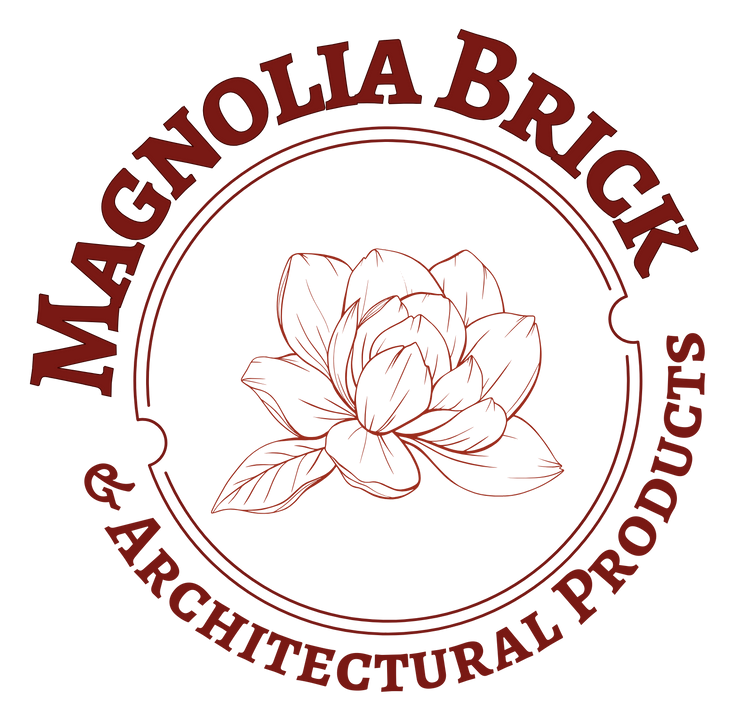The Difference Between Common Bricks and Face Bricks: Which One Should You Use?
The Difference Between Common Bricks and Face Bricks: Which One Should You Use?
When it comes to building with bricks, there's more to consider than just their classic appearance. Bricks are available in various types, and two primary categories are common bricks and face bricks. Each type serves a specific purpose and offers distinct advantages. Whether you're planning a construction project, a renovation, or exploring your design options, understanding the difference between common bricks and face bricks is crucial. At Magnolia Brick, with locations in Tupelo, MS, and Oxford, MS, we're here to help you make informed decisions about your brick selection.
Common Bricks: The Workhorses of Construction
Common bricks, sometimes referred to as utility bricks or engineering bricks, are the unsung heroes of the construction world. They form the backbone of many structures and are typically used for structural, load-bearing purposes. Here are some key characteristics of common bricks:
1. Functionality over Aesthetics:
Common bricks are primarily chosen for their strength and durability, not their appearance. They are often concealed within walls or structures, so their visual appeal is less important.
2. Utilitarian Look:
Common bricks tend to have a plain, rough surface with minimal texture or color variation. Their appearance is straightforward and utilitarian.
3. High Compressive Strength:
These bricks boast impressive compressive strength, making them ideal for supporting the weight of walls, foundations, and other structural components.
4. Limited Color Options:
Common bricks are typically available in basic colors like red, brown, or gray. Their color variations are minimal, which is why they are often hidden from view.
5. Affordability:
Common bricks are cost-effective, making them a practical choice for projects where aesthetics take a back seat to functionality.
6. Durability:
Due to their robust construction and resistance to weathering, common bricks can withstand harsh environmental conditions and last for generations.
Face Bricks: The Aesthetically Pleasing Choice
Face bricks, also known as facing bricks or veneer bricks, are the bricks that catch your eye. They are designed to be visible and are chosen for their aesthetic appeal. Face bricks are used to create the exterior façade of buildings, walls, and architectural features. Here's what sets them apart:
1. Aesthetic Excellence:
Face bricks are selected primarily for their visual appeal. They come in a wide range of colors, textures, and finishes, allowing for creative and eye-catching designs.
2. Texture and Variety:
Face bricks can have various textures, from smooth and glossy to rough and textured. They offer diverse design options to achieve specific architectural styles.
3. Color Variety:
One of the standout features of face bricks is the multitude of color options available. Whether you prefer earthy tones, vibrant shades, or contemporary neutrals, there's a face brick to match your vision.
4. Visibility:
As the name suggests, face bricks are meant to be visible and are used for exterior surfaces or interior walls where aesthetics matter.
5. Lower Compressive Strength:
Compared to common bricks, face bricks may have lower compressive strength. While they provide structural support, they may not be suitable for load-bearing applications.
6. Enhanced Cost:
Face bricks are generally more expensive than common bricks due to their focus on aesthetics and the wider range of options available.
Which Brick Should You Choose?
The choice between common bricks and face bricks depends on the specific requirements of your project and your design goals. Here are some scenarios to help you decide:
Choose Common Bricks If:
Structural Integrity is Paramount: If your project's primary concern is load-bearing capability and structural strength, common bricks are the logical choice.
Budget Constraints Apply: Common bricks are cost-effective and ideal for projects with budget limitations.
Aesthetics are Secondary: When the appearance of the bricks is not a significant consideration because they will be concealed within walls or structures.
Durability is Key: If you need bricks that can withstand extreme weather conditions and provide long-term durability.
Choose Face Bricks If:
Aesthetics Matter Most: When the visual impact of your project is a top priority, and you want to create a striking exterior or interior design.
Creative Freedom is Desired: If you're looking for a wide variety of colors, textures, and finishes to bring your architectural vision to life.
Visible Exteriors: When your project involves the creation of an eye-catching façade, stylish walls, or decorative features where the bricks will be visible.
Compressive Strength is Adequate: If structural strength requirements can be met with face bricks or additional structural support.
Combining the Best of Both Worlds
In some cases, the best approach is to combine both common and face bricks within your project. This allows you to benefit from the strength and durability of common bricks for load-bearing areas while using face bricks for exterior aesthetics and design highlights. It's a versatile approach that offers a balance between functionality and visual appeal.
Consult Brick Experts
The choice between common and face bricks is a crucial decision that should align with your project's goals and design vision. If you're unsure which type of brick is best suited for your project, consulting with brick experts, architects, or masonry professionals can provide valuable insights and guidance. They can help you make informed decisions that result in a successful and aesthetically pleasing outcome.
Conclusion
Both common bricks and face bricks have their distinct roles and advantages in construction and design. Understanding their differences and knowing when to use each type is essential for achieving the desired results in your projects. At Magnolia Brick, we offer a wide range of brick options in Tupelo, MS, and Oxford, MS, to cater to your specific needs, whether you prioritize functionality or aesthetics. By making informed choices about brick selection, you can create structures that not only stand the test of time but also delight the eye.











